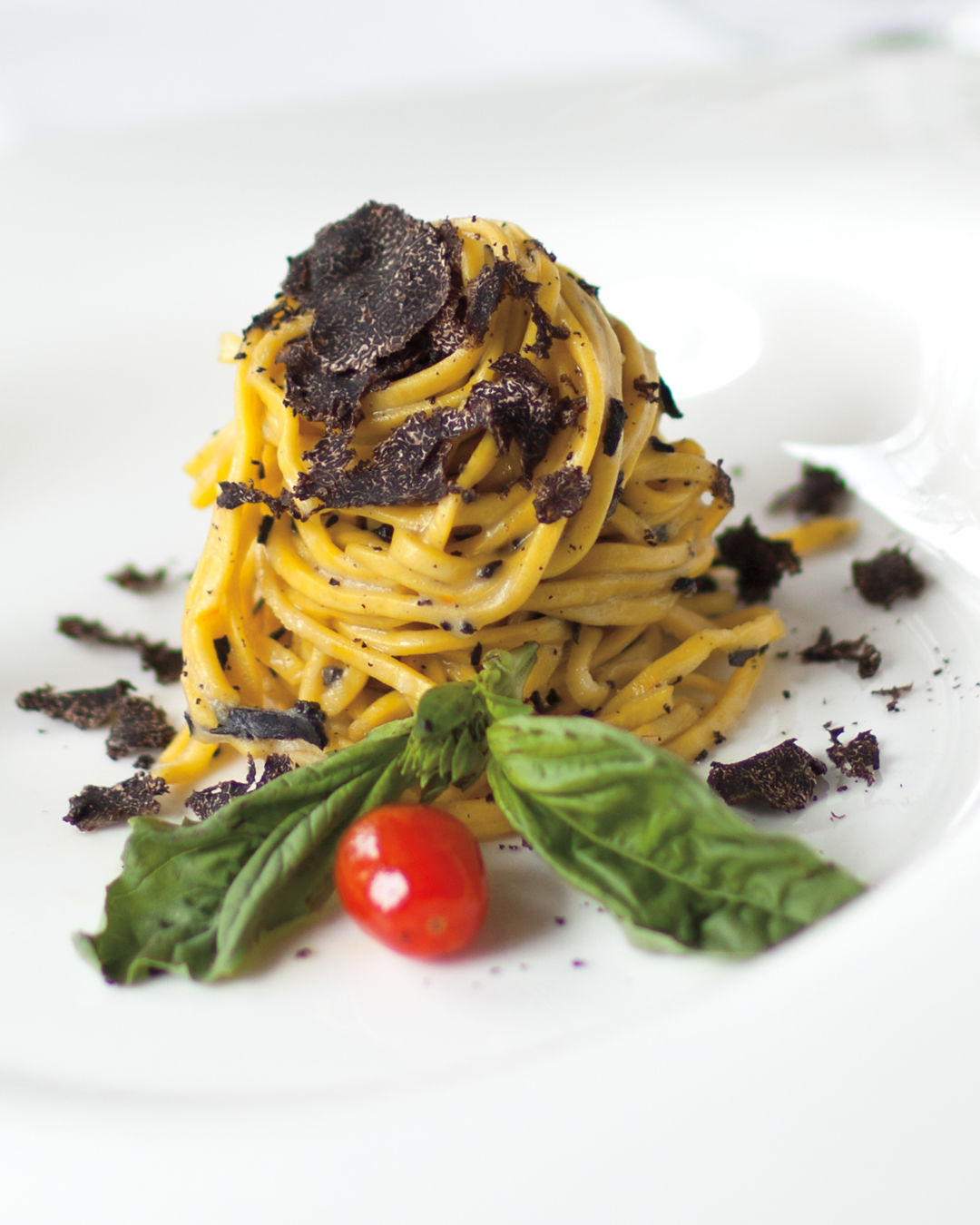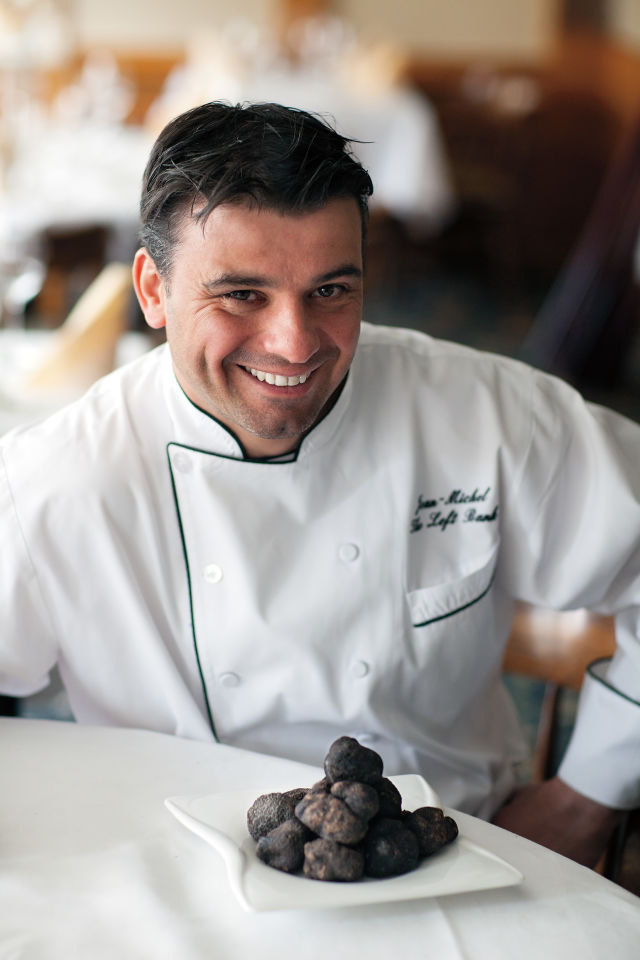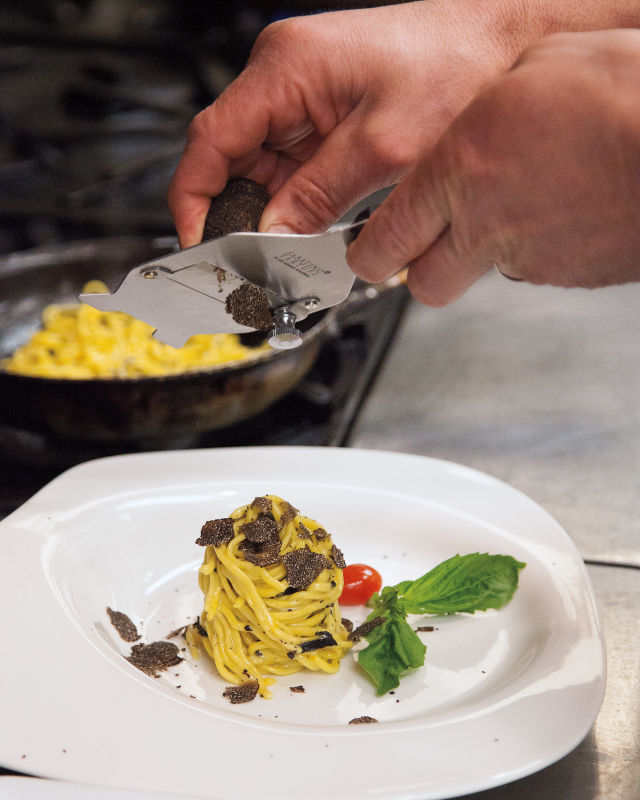Fall is Truffle Season and Vail's Left Bank is Where to Find Them

Image: Charles Engelbert
One afternoon in the dead of winter, I call on Jean-Michel Chelain in his kitchen at the Left Bank bearing an aromatic box packed with Oregon white truffles. I’ve proposed a cook-off: my American truffles (freshly foraged from a forest near my former Pacific Northwest hometown) versus Chelain’s European truffles, overnighted from a Rome-based specialty-foods purveyor.

Image: Charles Engerlbert
From October through early December, Tuber magnatum (a.k.a. the Italian white or Alba truffle) guest-stars on the Left Bank’s pedigreed menu, typically in the form of a to-die-for white truffle risotto. Native to the northern region of Italy and harvested using specially trained pigs or dogs, the Italian white truffle is the world’s most expensive culinary ingredient, this season fetching $190 per ounce, or $3,040 per pound. When sectioned, its marbled brown-and-white flesh emits an aroma that’s often compared to fried sunflower seeds or walnuts. By mid-December, after the Italian white begins its winter slumber, Tuber melanosporum, the French Périgord or black winter truffle, comes into season. Reaching its aromatic peak in January or February (and selling for $95 an ounce), the winter black has an intense bouquet often described as earthy or garlicky, simultaneously sweet and savory with notes of hazelnut and mint.
Black or white, when added to a buttery sauce or infused with meat (for the black, Chelain prefers veal chops or foie gras), the truffle’s complex aromatics bind with fats and elevate already mouthwatering dishes to a level that’s transcendental. Even though truffles have been part of Chelain’s culinary vocabulary since he was a schoolboy in Grenoble (where he foraged with his parents for wild mushrooms in the French Alps), he has yet to find words that precisely define its flavor.

Image: Charles Engerlbert
“It’s very difficult to describe,” says Chelain, a GQ-handsome fortysomething with half-apple cheeks, crow’s-feet around his eyes, and a mischievous grin reminiscent of Tom Cruise as Jerry Maguire. “It’s recognizable when you have it, a taste you know it when it’s in your mouth. It is like plants; it’s like earth. ... People associate the word ‘truffle’ with flavor. For some, the word is magic.”
In his kitchen, chef steps away from an eight-burner stove (where stockpots are simmering alongside a pan in which cumulus clouds of meringue are suspended in burbling caramel) to inspect my truffles. He cracks open a Styrofoam box chilled with dry ice and wrinkles his nose: my Oregon whites, marble-size golden nuggets that command barely $15 an ounce, emit an eye-watering aroma that one Willamette Valley winemaker once described to me as gasoline. Chelain sections one of the nubbins on a cutting board, sniffs, and clearly is unimpressed, but he’s too much of a gentleman to bad-mouth my truffles.
“In my opinion, if you want a Picasso or a Louis Vuitton, you buy a Picasso or a Louis Vuitton,” is how he puts it. “Then there is the knockoff, which is not to say that it is not good. If the Oregon truffle were up to my standard, I would be happy to cook with it.”
In other words, it’s already game-over for my so-called cook-off.
To demonstrate his point, chef drains a colander of saffron-scented homemade pasta, nests it on a plate, then plucks a French Périgord truffle from a heaping plate and, like a carpenter honing a piece of wood, uses a stainless steel truffle slicer to scatter shavings over the top.
“Because this is an expensive item with a particular flavor, you have to be careful of what you merge it with,” he says as he works. “Try to keep it simple, as plain as you can. Pasta or risotto, that is best. With a little bit of butter. To cut the truffle fresh is important, in very thin slices. ... Here, this is something we have on the menu all the time.”
Accepting his plate (and defeat), I close my eyes, inhale, taste. And am transported to the woods high above Grenoble, a magical place I’ve never been, yet which somehow tastes familiar.






































